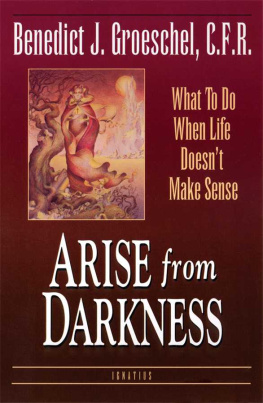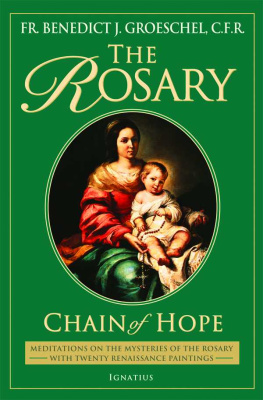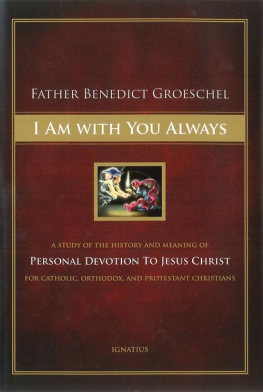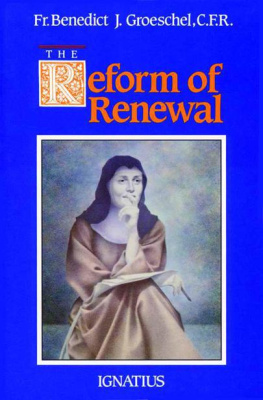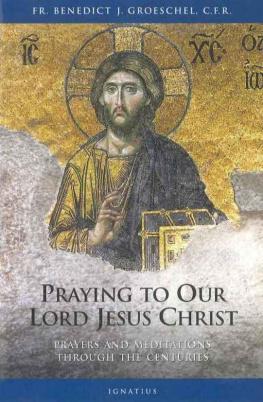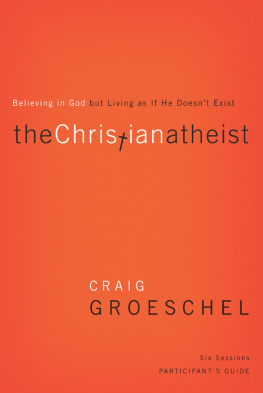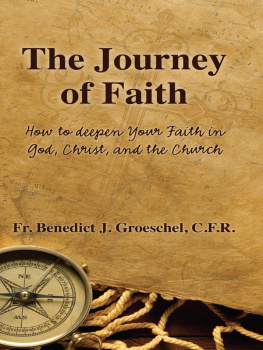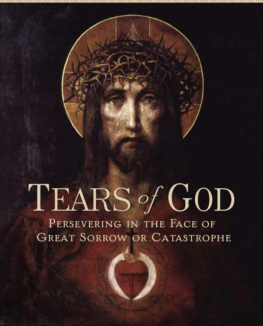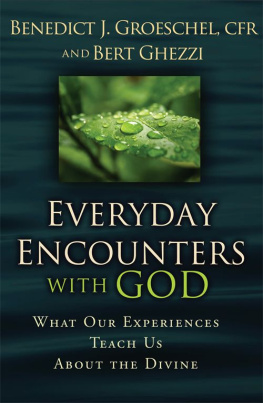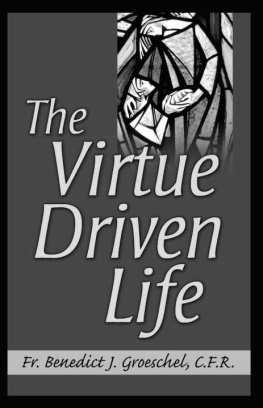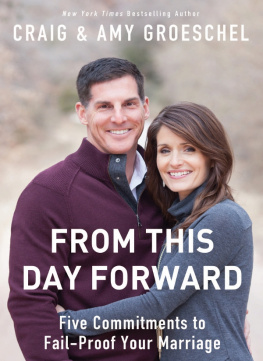Benedict J. Groeschel - After This Life: What Catholics Believe about What Happens Next
Here you can read online Benedict J. Groeschel - After This Life: What Catholics Believe about What Happens Next full text of the book (entire story) in english for free. Download pdf and epub, get meaning, cover and reviews about this ebook. year: 2009, publisher: Our Sunday Visitor, genre: Religion. Description of the work, (preface) as well as reviews are available. Best literature library LitArk.com created for fans of good reading and offers a wide selection of genres:
Romance novel
Science fiction
Adventure
Detective
Science
History
Home and family
Prose
Art
Politics
Computer
Non-fiction
Religion
Business
Children
Humor
Choose a favorite category and find really read worthwhile books. Enjoy immersion in the world of imagination, feel the emotions of the characters or learn something new for yourself, make an fascinating discovery.

- Book:After This Life: What Catholics Believe about What Happens Next
- Author:
- Publisher:Our Sunday Visitor
- Genre:
- Year:2009
- Rating:3 / 5
- Favourites:Add to favourites
- Your mark:
- 60
- 1
- 2
- 3
- 4
- 5
After This Life: What Catholics Believe about What Happens Next: summary, description and annotation
We offer to read an annotation, description, summary or preface (depends on what the author of the book "After This Life: What Catholics Believe about What Happens Next" wrote himself). If you haven't found the necessary information about the book — write in the comments, we will try to find it.
Benedict J. Groeschel: author's other books
Who wrote After This Life: What Catholics Believe about What Happens Next? Find out the surname, the name of the author of the book and a list of all author's works by series.
After This Life: What Catholics Believe about What Happens Next — read online for free the complete book (whole text) full work
Below is the text of the book, divided by pages. System saving the place of the last page read, allows you to conveniently read the book "After This Life: What Catholics Believe about What Happens Next" online for free, without having to search again every time where you left off. Put a bookmark, and you can go to the page where you finished reading at any time.
Font size:
Interval:
Bookmark:
After
This Life
After
This Life
What Catholics Believe About What Happens Next
Fr. Benedict J. Groeschel, C.F.R.
Our Sunday Visitor Publishing Division
Our Sunday Visitor, Inc.
Huntington, Indiana 46750
Nihil Obstat
Reverend Michael Heintz, Ph.D.
Censor Librorum
Imprimatur John M. DArcy
John M. DArcy
Bishop of Fort Wayne-South Bend
August 17, 2009
The Nihil Obstat and Imprimatur are official declarations that a book is free from doctrinal or moral error. It is not implied that those who have granted the Nihil Obstat and Imprimatur agree with the contents, opinions, or statements expressed.
Every reasonable effort has been made to determine copyright holders of excerpted materials and to secure permissions as needed. If any copyrighted materials have been inadvertently used in this work without proper credit being given in one form or another, please notify Our Sunday Visitor in writing so that future printings of this work may be corrected accordingly.
Copyright 2009 by Benedict J. Groeschel, C.F.R. Published 2009.
14 13 12 11 10 3 4 5 6 7 8 9
All rights reserved. With the exception of short excerpts for critical reviews, no part of this work may be reproduced or transmitted in any form or by any means whatsoever without permission in writing from the publisher. Write:
Our Sunday Visitor Publishing Division
Our Sunday Visitor, Inc.
200 Noll Plaza
Huntington, IN 46750
1-800-348-2440
ISBN: 978-1-59276-442-6 (Inventory No. T679)
LCCN: 2009936134
Cover design: Lindsey Luken
Cover art: The Crosiers
Interior design by Sherri L. Hoffman
PRINTED IN THE UNITED STATES OF AMERICA
To all beloved friends who have passed beyond this life.
Contents
Acknowledgments
I am very grateful to John Collins, my faithful editor. Over the past couple of years I have been struggling with physical problems and especially the effects of a stroke that I experienced about three months before I finished this book. It is only because of the help and encouragement of John that I have been able to bring this book to its conclusion. It concerns a topic that I believe is extremely important to many people, including me, people who are growing old or struggling with infirmities. It is for these people especially that I have written After This Life.
I also thank Father Patrick Fitzsimons for his comments on early versions of this book, and I especially thank Father Joseph OHara, whose generous help was instrumental in preparing the final manuscript for publication.
As always, I am very grateful to Bert Ghezzi of Our Sunday Visitor for his continued encouragement on this book and over the years.
I hope many will find this book a personal help. I write my books as a form of spiritual direction, and I only ask the Holy Spirit that my books may be a blessing and a help to those who read them.
Father Benedict
The Solemnity of the Assumption
August 15, 2009
Introduction
In my end is my beginning.
T. S. Eliot (from Four Quartets)
The end of this life and the afterlife that follows have always been among the most important concerns of human beings. We see evidence of this interest in the oldest ruins of human civilization, the dolmans or tombs of County Clare in Ireland. These are incredible uncut stone structures that required the lifting of ledges weighing one hundred thousand pounds, fifteen thousand years ago. We see such evidence as well in the oldest intact human structures, the Egyptian pyramids, which are profound testimonies to the importance of the concern about life after death to people who lived thousands of years ago. This concern was so great among the Egyptians that it actually overshadowed the importance of the present life. Virtually every ancient culture we know of paid great attention to the death of its members, surrounding their passing with ritual and ceremony, with prayers and magical rites. The universality of such burial rites and tombs, therefore, raises the question: Why was it so important to build a house for the dead unless one thought that in some mysterious way they would need it in some kind of continued existence?
In many ways we are far removed from our ancient ancestors, yet the funerals of those we love and of our public figures are no less important or ritualistic to us. We lay our dead as lovingly in their graves or in their mausoleums as did our ancestors. We visit our cemeteries, and at the graves of our loved ones we feel less alone. At these moments, no matter what our religious convictions, we are left with the inescapable feeling that death is not the end it seems to be, that somehow there is something more. Even beyond this is the experience of many who are aware that they are approaching the end of life from illness or advanced age. Death is drawing near, but the feeling remains that death may not really be final. We are reminded of the haunting and perceptive words of the great Christian poet T. S. Elliot, In my end is my beginning, and we hope.
What actually happens at the moment of bodily death and after becomes of overwhelming importance to us all when a dear relative or friend dies. The question that haunts our minds, that cannot be put aside, is: Will I ever see my loved one again? Even the agnostics and atheists among us have trouble freeing themselves of this question.
Having looked death in the eye more than once and having for all intents and purposes been dead with no vital signs for half an hour, I feel obligated to write this book, not only to help others deal with death, but to explain, as well, what the Christian faith and the teaching of the Church tell us about the afterlife; that is, about what comes next.
Almost forty years of working as a psychologist have taught me that the most common personal problem of sane people is anxiety and fear. Someone has perceptively written: We are afraid to live and afraid to die. And this is the truth often we lead partial lives, afraid to take risks, afraid to live fully. We are too timid, too unsure, to fully commit ourselves in faith and trust to God and in love to other people as we spend our brief day on earth. Simultaneously, we do all we can to avoid the plain fact that we are mortal that death is our lot, our inevitable future. In denial we try to go on, living day after day, oblivious of the fact that we and those we care for will one day die. We live as if the world were static, yet it changes constantly; every microsecond brings enormous change. We pretend that it is not the nature of all life to be born, to grow, to decline, and eventually to perish. Thus, when life-threatening events occur, many of us are very illprepared to face them, and when we look in desperation to friends for help, we are shocked to discover that these people are unable to deal with the possibility of death either unable to help us when we need them most.
We Live in a Culture That Denies Death
The denial of death is one of the primary characteristics of our contemporary culture. The writer Susan Sontag, a keen observer of our modern world, saw this clearly. Although not religious herself, and certainly no friend of the Church, she was perceptive enough to write: For those who live neither with religious consolations about death nor with a sense of death (or of anything else) as natural, death is the obscene mystery, the ultimate affront, the thing that cannot be controlled. It can only be denied.
Wherever we look we find evidence of this: Our drugstore and supermarket shelves are crowded with products designed to make us look younger. People spend incredible amounts of money on cosmetics, hair dyes, hair replacements, and a thousand other things, all in an effort to pretend that they are not aging, to deny the fact that their physical bodies are coming closer to death with every passing second. Large numbers of people willingly even enthusiastically submit to unneeded and potentially dangerous plastic surgeries, not to improve their health or to cure some disease, but simply to pretend to be younger, to deny that they must someday experience physical death. Sometimes even our doctors encourage this way of thinking, telling us that every ailment has a cure that death can be postponed forever.
Next pageFont size:
Interval:
Bookmark:
Similar books «After This Life: What Catholics Believe about What Happens Next»
Look at similar books to After This Life: What Catholics Believe about What Happens Next. We have selected literature similar in name and meaning in the hope of providing readers with more options to find new, interesting, not yet read works.
Discussion, reviews of the book After This Life: What Catholics Believe about What Happens Next and just readers' own opinions. Leave your comments, write what you think about the work, its meaning or the main characters. Specify what exactly you liked and what you didn't like, and why you think so.

